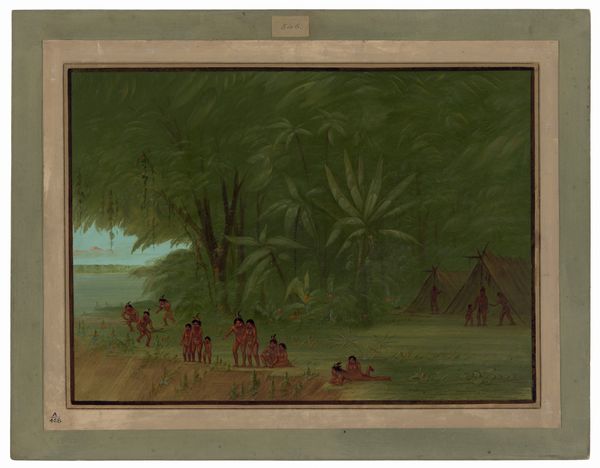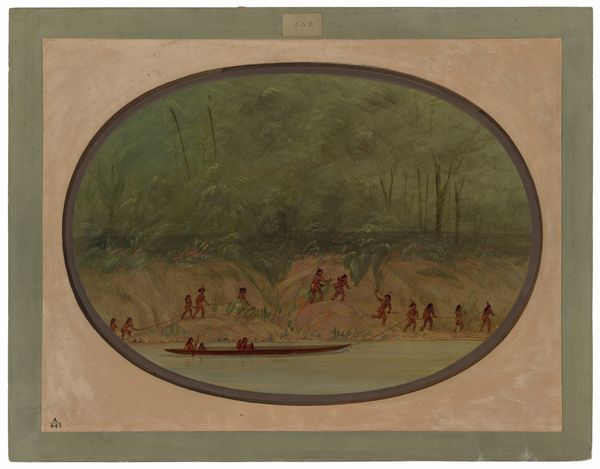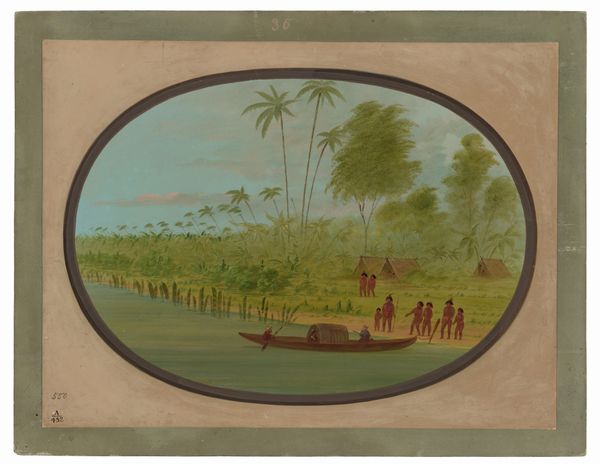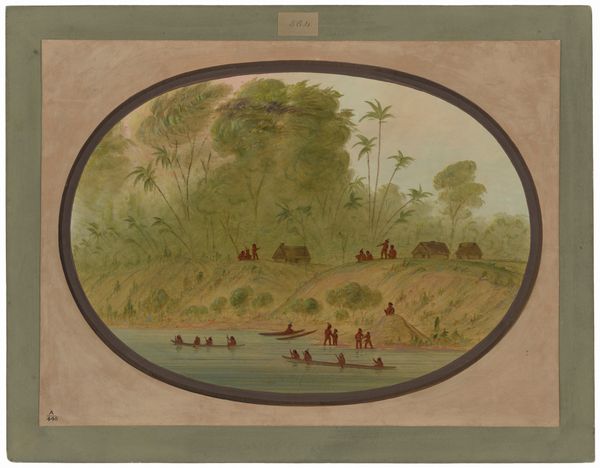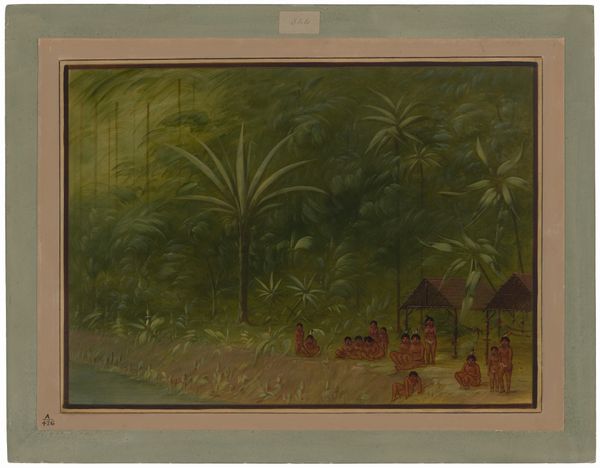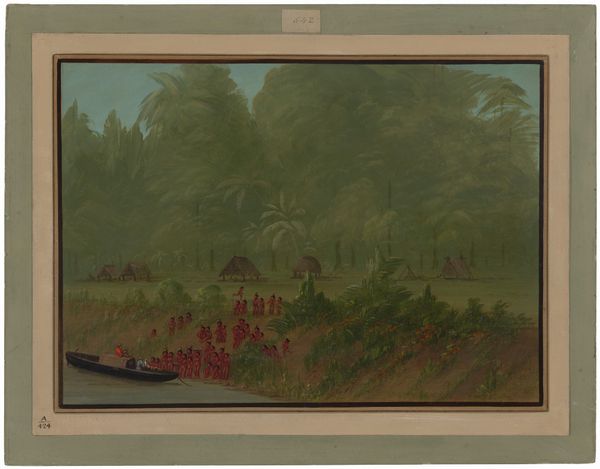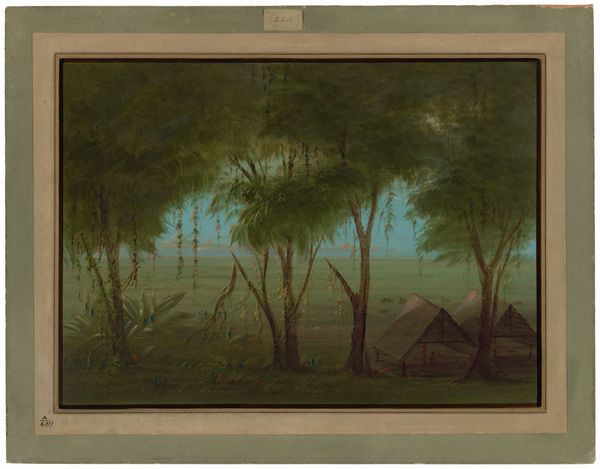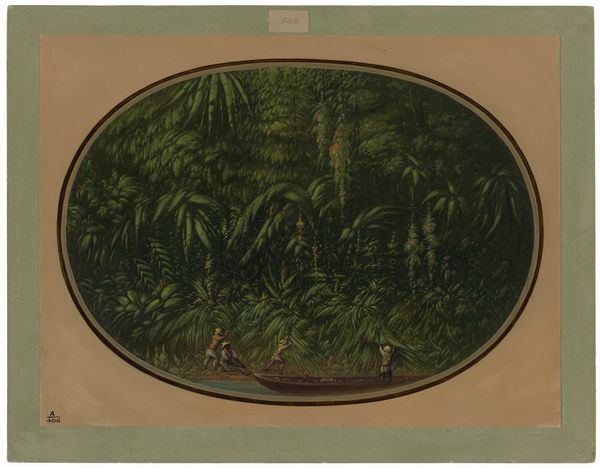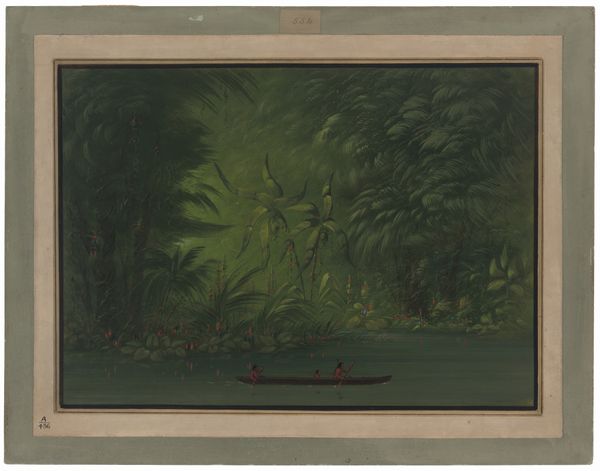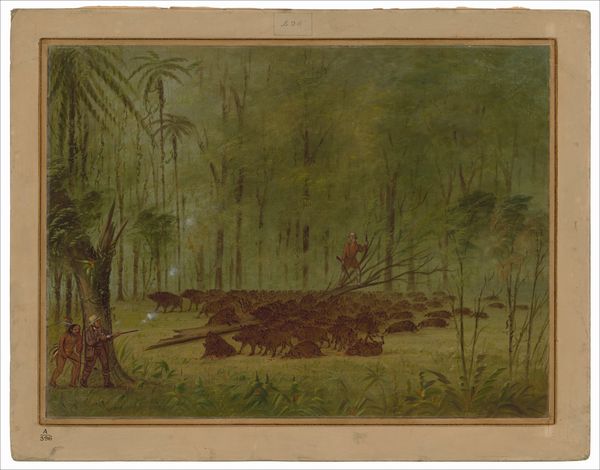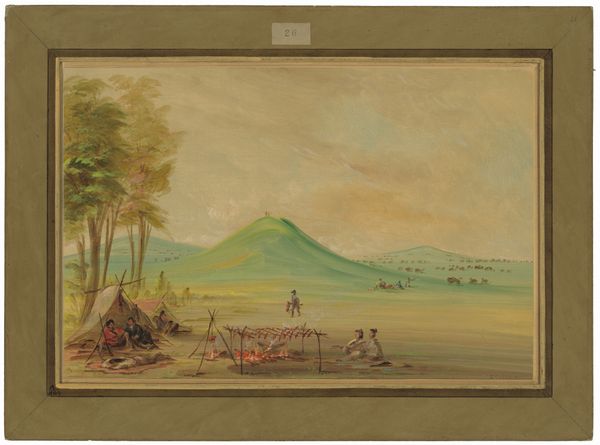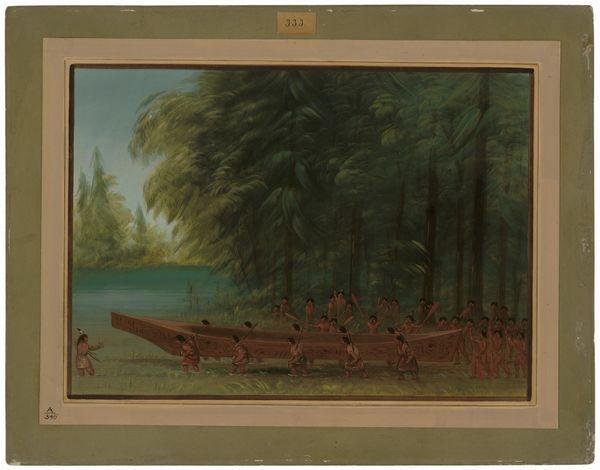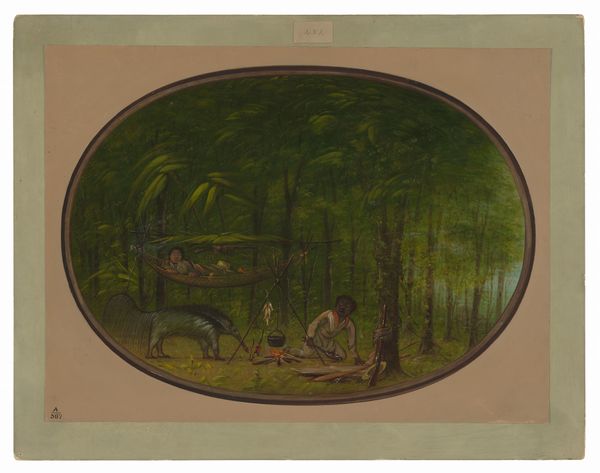
painting
#
painting
#
landscape
#
figuration
Dimensions: overall: 46.4 x 61.1 cm (18 1/4 x 24 1/16 in.)
Copyright: National Gallery of Art: CC0 1.0
Editor: We’re looking at "Tapuya Encampment," a landscape painting from sometime between 1854 and 1869 by George Catlin, created using oil paint in a plein-air style. It depicts a scene with indigenous figures. There's an interesting contrast between the vibrancy of the dance and the stillness of the figures by the tents. How do you interpret this piece? Curator: Note how Catlin structures the composition: The figures, rendered in rather simplified forms, are positioned against a backdrop of lush, almost overwhelming vegetation. Consider how the eye is led through the canvas; the dance is dynamic and yet somehow framed by the static quality of the treeline and distant water. Is this tension deliberately constructed? Editor: So you are seeing a tension between stillness and movement? It strikes me that the color choices further emphasizes it – the muted greens of the landscape behind versus the brighter reds of the figures. Curator: Precisely. The flatness of the picture plane in contrast to implied spatial depth invites contemplation, does it not? Also, how might Catlin use of color and form contribute to an interpretation of indigenous culture versus European styles. Editor: It seems Catlin's choices might be both about representation and an exercise in playing with artistic styles. I'm definitely seeing the structure more clearly now – the deliberate placement and the impact of the formal elements. Curator: Indeed, by concentrating on composition, colour and the rendering of form we can appreciate that this landscape painting does more than simply depict a scene; it presents a system of relationships that merits consideration.
Comments
No comments
Be the first to comment and join the conversation on the ultimate creative platform.
